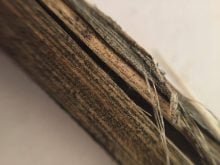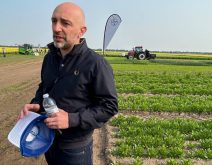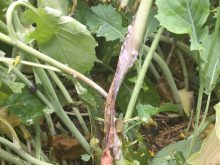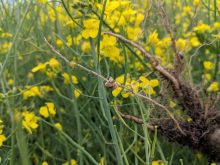A program that offers free canola disease testing to producers in Saskatchewan has widened its scope.
The disease monitoring program, offered by SaskCanola in conjunction with the Saskatchewan agriculture department, is free to producers across the province. Blackleg and clubroot testing have been available through the program for the past few years but this is the first year of testing for verticillium stripe.
Kaeley Kindrachuk, an agronomy extension specialist with SaskCanola, says the increasing incidence of verticillium stripe in neighbouring Manitoba prompted the decision to add the soil-borne fungal disease to the program’s testing lineup.

“In the last couple of years … Manitoba has really had a problem with it. And if we’ve learned anything from the other canola diseases or any diseases in general, it’s that it doesn’t stop at the border,” she says.
Read Also

Cancer agency reclassifies another herbicide ‘probably carcinogenic’
The WHO’s cancer research agency has now put atrazine, a herbicide well known to corn growers, in the same potential-hazard category where the agency put glyphosate.
“We’re trying to be proactive with verticillium stripe. This will give farmers and agronomists some more insight into what’s happening in the field.”
Verticillium stripe doesn’t appear to be as prevalent in the province as other canola diseases, says Kindrachuk, but that doesn’t mean it’s not already present. Because its symptoms are similar to those of other diseases, it may be going undiagnosed or misdiagnosed, which is why testing is important.
“That confirmation through sending that sample to the lab and getting the lab confirmation will help farmers and agronomists with their decision-making in the future,” she adds.
The procedure for blackleg disease race and verticillium stripe testing is relatively simple. Growers and agronomists are asked to collect 10 random stem samples several paces apart and repeat the collection in at least three different areas of a field before allowing them to dry overnight.

They can then email SaskCanola ([email protected]) for a testing code and fill out an analysis request form. The air-dried samples must be packaged in a brown paper bag labelled with the testing code, sampling date and analysis request form, and sent by mail to Discovery Seed Labs.
In the case of clubroot testing, individuals can obtain a soil sampling bag by contacting the SaskCanola office. Soil samples should be collected in late summer or at swathing from areas that are at high risk of clubroot, including field entrances, high traffic areas and low lying spots.
Samples can be dropped off at any Saskatchewan agriculture regional office or Discovery Seed Labs in Saskatoon for testing.
Kindrachuk says uptake for the testing program in recent years has been lower than what officials would have liked. She attributes that to dry conditions and low disease pressure in the province and hopes the addition of verticillium stripe testing will help renew interest in the program among producers and agronomists.
“It’s really difficult to manage your canola field when you don’t know what’s in it,” she says. “This (testing) is just another tool in the toolbox for farmers. It’s just something to help them manage their canola fields or their land better.
“It’s not to say farmers aren’t (already) managing it well, but more information will help with their decision-making.”
SaskCanola also provides online resources for producers on its website (saskcanola.com) including the field scouting guide ‘Is It Blackleg or Verticillium Stripe’ as well as Canola Encyclopedia pages on the major canola diseases.
Manitoba offers a similar testing program through the Manitoba Canola Growers and its Pest Surveillance Initiative Lab. The Get Tested program offers free blackleg, clubroot and verticillium stripe testing to members.
















